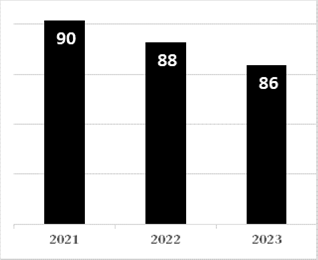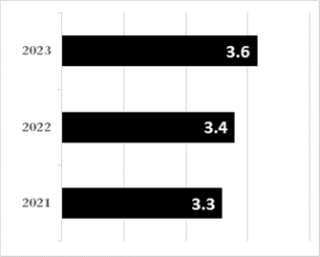Managing Ireland’s Debt

Ireland, like all other European countries and most other developed world states, has relied on large scale borrowing to cope with the reduction in tax revenue and pay for the various welfare and enterprise supports necessitated by the Covid-19 pandemic. Fortunately, the accommodative approach of the European Central Bank has allowed Government to easily access funds and at historically low interest rates.
Figures from the documents accompanying Budget 2022 reveal the current and expected levels of debt, and debt financing costs, that Ireland is facing - see Charts 1 and 2. The pandemic has resulted in the net national debt climbing from 82% of national income (as measured by GNI*) in 2019 (Budget 2020) to reach an expected level of 90% this year and 86% by 2023. Fortunately, interest costs remain low with these costs expected to be €3,395m in 2022 - a reduction on the costs faced in 2020 (€3,830m). However, although debt costs are low, the scale of debt remains an issue and a strategic risk to the state in the longer term.

GIVING A VOICE TO THOSE
WHO DON’T HAVE A VOICE
When you support Social Justice Ireland, you are tackling the causes of problems.
Chart 1 Net Debt as % GNI*

Chart 2 Debt Interest Cost €b

To minimise future debt financing challenges, and to avoid the adoption of unnecessary austerity measures in the years to come, Social Justice Ireland believes that Government should prioritise the development of a European-wide debt warehousing strategy for the additional debt brought on by the pandemic. This debt should be separated from the existing national debt and financed by a 100 year ECB bond with a near-zero interest rate.
